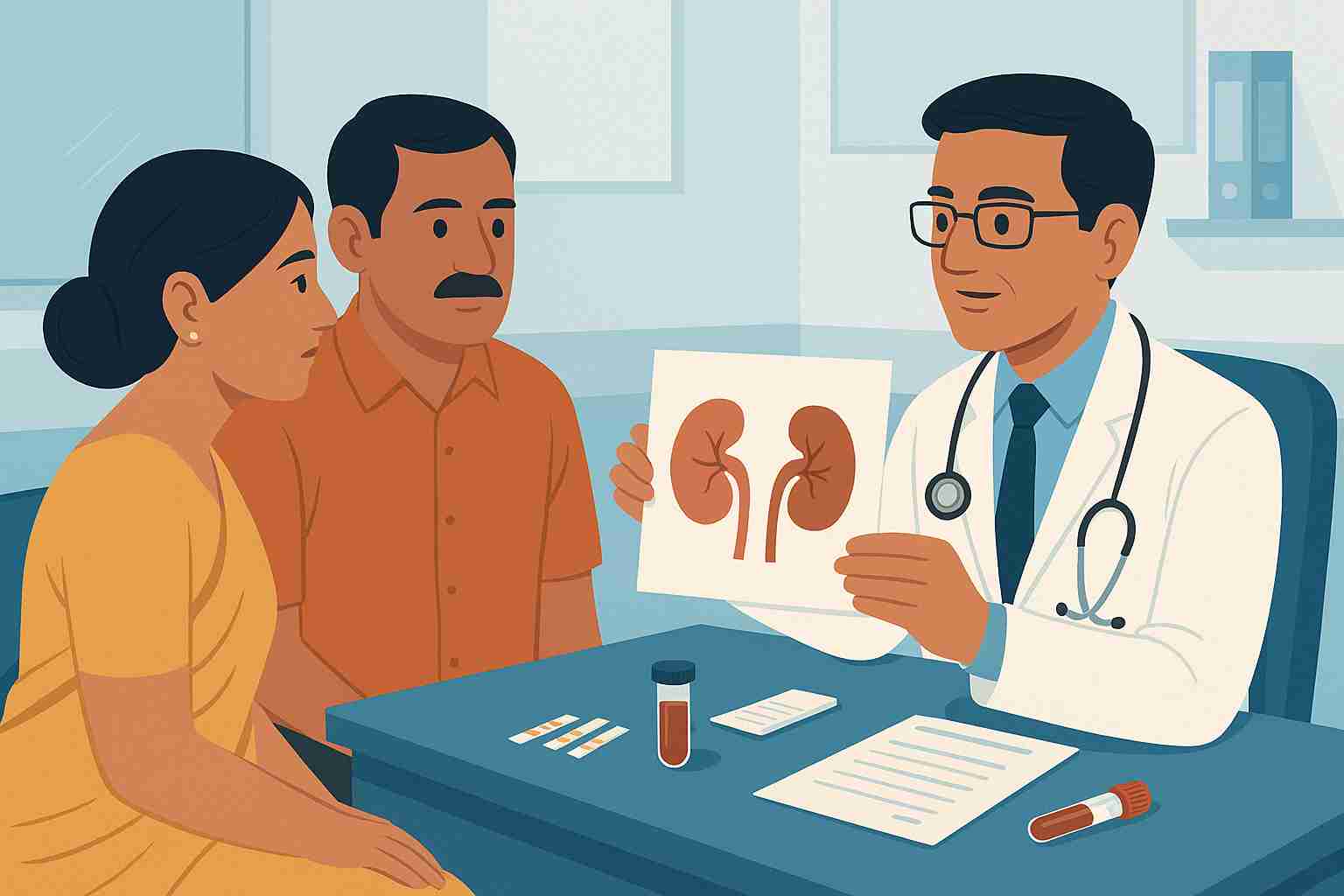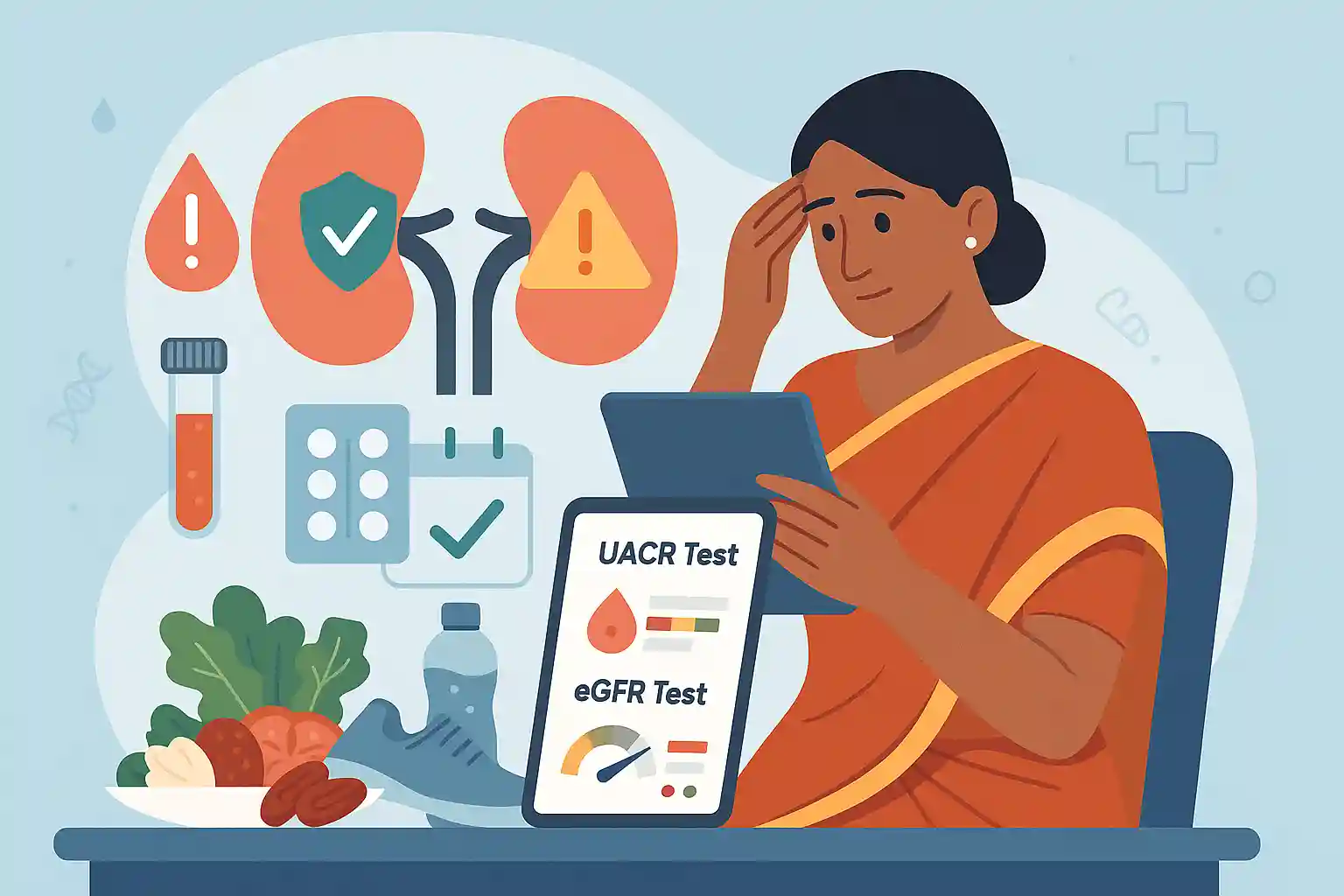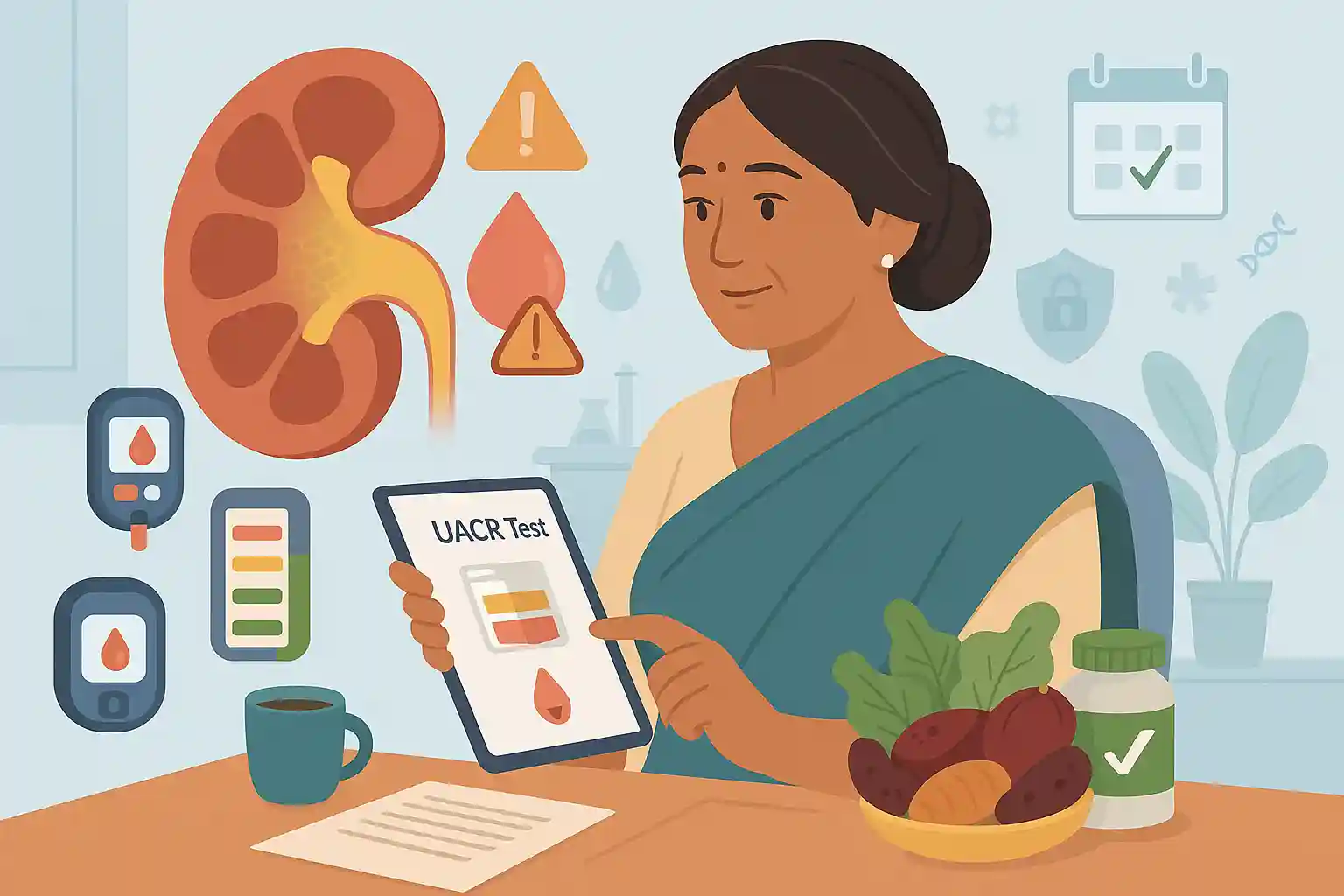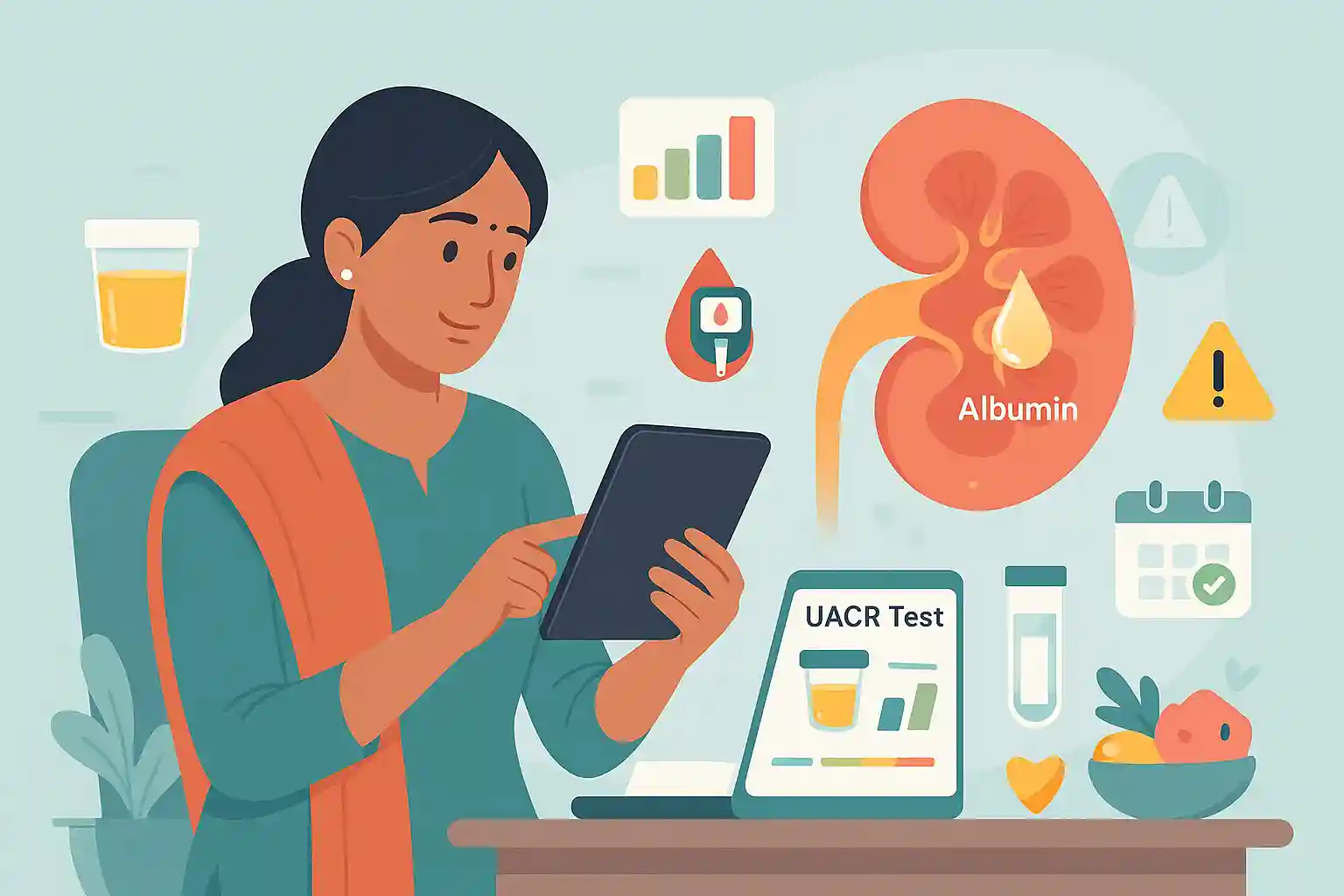India is experiencing a silent health catastrophe. Every 8 minutes, an Indian develops kidney failure. With 17% of adults having chronic kidney disease and only 3-5% knowing about it, we're facing an epidemic that's destroying families financially and emotionally. The tragedy? Most of this suffering is preventable with two simple tests costing less than ₹1,000.
UACR and eGFR tests can detect kidney problems 5-10 years before symptoms appear, when damage is still reversible. Here's how these tests can rewrite your health story and help India overcome its kidney crisis.
The Shocking Reality of India's Kidney Crisis
Crisis by Numbers:
- 220 million Indians have chronic kidney disease
- Only 3-5% know they have kidney problems
- 2 lakh people need dialysis annually
- Only 10,000 kidney transplants happen each year
- Average dialysis cost: ₹3-6 lakh annually per patient
- Most kidney disease discovered when 80% function is already lost
Why India Is Particularly Vulnerable:
- Diabetes epidemic: 77+ million diabetics
- High blood pressure: Often undiagnosed and untreated
- Genetic susceptibility: South Asians develop complications earlier
- Poor access to preventive healthcare
- High salt traditional diets
- Air pollution and environmental toxins
The Silent Destroyer: Why Kidney Disease Goes Undetected
Why Kidneys Fail Silently:
- Kidneys can function normally with only 20% capacity
- No pain or obvious symptoms until very late stage
- Body compensates for kidney damage initially
- Basic urine tests miss early damage
- Most people don't get regular kidney screening
When Symptoms Finally Appear:
- Swelling in feet, ankles, or face
- Persistent fatigue and weakness
- Shortness of breath
- Nausea and loss of appetite
- Changes in urination patterns
- By this time, kidney function is below 20%
UACR and eGFR: Your Early Warning System
What UACR (Urine Albumin-to-Creatinine Ratio) Detects:
- Protein leakage - earliest sign of kidney damage
- Detects problems 5-10 years before symptoms
- Normal: Less than 30 mg/g
- Early damage: 30-300 mg/g (still reversible)
- Advanced damage: Above 300 mg/g
What eGFR (Estimated Glomerular Filtration Rate) Shows:
- How well kidneys filter waste from blood
- Normal: 90+ mL/min/1.73m²
- Mild decline: 60-89 mL/min/1.73m²
- Moderate decline: 30-59 mL/min/1.73m²
- Severe decline: 15-29 mL/min/1.73m² (prepare for dialysis)
- Kidney failure: Less than 15 mL/min/1.73m²
Who Needs Testing and How Often
High-Risk Indians (Test Every 6 Months):
- Diabetes (Type 1 or Type 2)
- High blood pressure
- Family history of kidney disease
- Age over 60 years
- Heart disease or stroke history
- Autoimmune diseases
Moderate Risk (Test Annually):
- Age 45-60 with no other risk factors
- Overweight or obese
- Smoking history
- Regular use of pain medications
- History of kidney stones
Everyone Else (Test Every 2-3 Years):
- Age 18-45 with no risk factors
- Normal blood pressure and weight
- No family history of kidney disease
- No chronic health conditions
The Economic Impact: Prevention vs Treatment
Cost of Early Detection:
- UACR test: ₹300-600
- eGFR (creatinine): ₹200-400
- Annual screening: ₹500-1,000
- Lifetime screening cost: ₹25,000-50,000
Cost of Late-Stage Treatment:
- Dialysis: ₹3-6 lakh annually
- Kidney transplant: ₹5-15 lakh
- Post-transplant medications: ₹2-3 lakh annually
- Lost productivity and family impact: Immeasurable
- Average family spends 70% of income on kidney treatment
Success Stories: Early Detection Changes Everything
What Early Detection Achieves:
- 80% of early kidney disease can be slowed or stopped
- Progression to kidney failure prevented in 90% of cases
- Heart disease risk reduced by 50%
- Healthcare costs reduced by 60-70%
- Quality of life maintained
- Family financial stability preserved
Real Impact Examples:
- Diabetic with UACR 50 mg/g: Treatment prevented progression to dialysis
- Pre-diabetic with eGFR 70: Lifestyle changes restored normal function
- Hypertensive patient: Early intervention prevented kidney failure
- Family screening: Multiple members treated before symptoms
How to Get Tested in India
Testing Options Across India:
- Primary Health Centers: Basic testing available
- District hospitals: Comprehensive kidney panels
- Private diagnostic chains: Quick results and convenience
- Corporate health packages: Often include both tests
- Home collection services: Available in major cities
Government Support Programs:
- Ayushman Bharat: Covers kidney disease treatment
- State health schemes: Additional coverage varies
- Free screening camps: Organized by health departments
- National Program for Prevention and Control of Diabetes: Includes kidney screening
Building a Kidney-Healthy India: Community Action
Individual Actions:
- Get yourself and family tested regularly
- Share information with friends and colleagues
- Advocate for workplace health screening programs
- Support community health initiatives
- Make kidney health a family priority
Family and Community Strategies:
- Organize group testing to reduce costs
- Educate elderly family members about kidney health
- Create support networks for those with kidney disease
- Promote healthy lifestyle changes collectively
- Advocate for better healthcare access in rural areas
Technology Solutions for Mass Screening
Emerging Solutions:
- Mobile health vans for rural screening
- Telemedicine for result interpretation
- Smartphone apps for kidney health tracking
- AI-powered risk assessment tools
- Point-of-care testing devices
Making Testing Accessible:
- Workplace screening programs
- School and college health checkups
- Community center testing drives
- Religious and social organization partnerships
- Integration with existing health programs
Your Personal Action Plan
This Week:
- Assess your kidney disease risk factors
- Schedule UACR and eGFR testing
- Calculate your family's screening schedule
- Share this information with high-risk family members
This Month:
- Complete your kidney function testing
- Get results interpreted by qualified healthcare provider
- Start preventive measures based on results
- Set up regular monitoring schedule
Long-term Commitment:
- Make kidney screening a family tradition
- Monitor and manage diabetes and blood pressure
- Maintain healthy lifestyle choices
- Stay updated on kidney health advances
- Support kidney disease awareness in your community
The Path Forward: Changing India's Health Story
India's kidney crisis is real, but it's not hopeless. Every person who gets tested early, every family that prioritizes kidney health, and every community that organizes screening drives contributes to changing our national health story.
The solution isn't complex or expensive—it's about making simple tests routine. UACR and eGFR testing can detect problems when they're still fixable, preventing the heartbreak and financial devastation of kidney failure.
Don't become another statistic in India's kidney crisis. Take control with early detection, preventive care, and regular monitoring. Your kidneys are working silently to keep you healthy—make sure you're working just as hard to keep them healthy.
The power to change your health story is in your hands. Start with a simple test, continue with smart prevention, and help build a kidney-healthy India for future generations.



